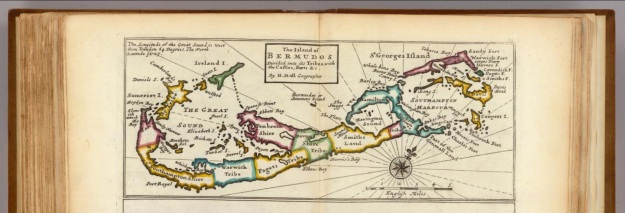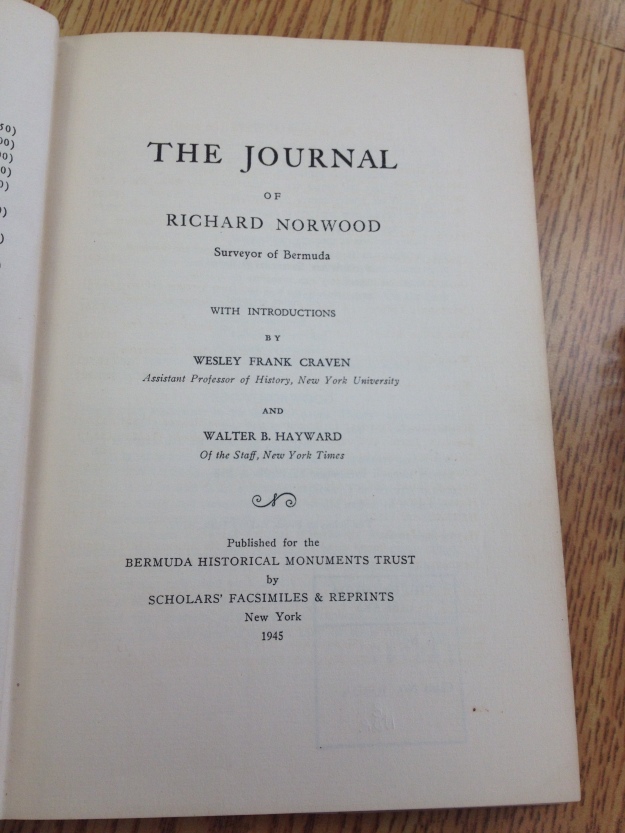School geography lessons taught me the basis of English town development: growing outwards from a small crossroads, extending along rivers, canals and railways, concentric circles becoming more residential as they expand away from an industrial centre.
Bermuda developed along very different lines. Although it began in the 17th century the island urban geography was as planned and deliberate as Milton Keynes. If you don’t know Milton Keynes, it is a grid of roundabouts connected by identical sections of dual carriageway, designed in the 1970s. So Bermuda is essentially a long road from end to end with “tribe” roads coming off in perpendicular fashion.
For this design we have to thank one Richard Norwood, a 17th century opportunist who happened to be on Bermuda in 1616 when Captain Tucker was wanting someone to do a survey of the island. Norwood negotiated a fee of 2lbs tobacco or 5d per share. There were 400 shares in the Bermuda stock. At 12d per shilling, 20 shillings per pound, this amounts to £8 and 6 shillings. Or about £800 ($530) of 2015 purchasing power.
At the age of 49, Richard Norwood wrote a journal. This came to light in 1945 and was transcribed by the Historical Monuments Trust.
Looking at the scrawled page – apparently typical of Elizabethan secretary script – this cannot have been an easy task. That and some unfamiliar spelling:
- turkell = turtle
- rowle = roll
- pilloberes = pillowcases
- cushings = cushions
- cokernuts = coconuts
- puter = pewter
- horeglase = hourglass
- trinilts = tree nails
- secticles = spectacles
The focus of the journal is spiritual castigation, but from within the “catalogue of sins” we catch glimpses of the 17th century Bermuda.
Richard Norwood was forced to finish his formal schooling at the age of 12, when a fellow schoolboy with the memorable name of Adolphus Speed, won the only scholarship by a small margin.
He became apprenticed to a fishmonger in Stony Stratford. this little town is quite close to my UK home and today is a charming place, but Norwood described it as
“much given to deboistness, to swaggering, brawling and fighting, to swearing and drunkenness”
Whether dislike of the town or of the fish, he left his job somewhat abruptly at the age of 15 and served a short prison sentence for failing to honour his apprenticeship.
Thereafter he found work in the docks at Lymington and gained some fame when he fashioned a primitive diving bell from a hogshead barrel and used it to recover a large ship’s gun that had been accidentally dropped overboard into the harbour. His innovation came to the attention of the Bermuda Company. the adventurers commissioned him as a technical specialist for “there was a great store of pearls in the Summer Islands” or so it was thought.
After a 5 week voyage during which Norwood studied maths, navigation and religion, the ship stuck fast on the rocks. The enforced 2 weeks on the offshore reef were enough for the conclusion that there were no pearls to be found. So for the next year, 1614 or thereabouts, Norwood found himself at a loose end on an island in the middle of the Atlantic Ocean.
He cannot have had much respect for authority , for he ignored Governor Moore’s restrictions that nobody should venture beyond Burnt Point, some 3 miles from the town of St George and built himself a boat from a hollowed tree with logs aside to balance it (basically a trimaran) and sailed 16 miles from Longbird Island to Somerset, where he gathered palmetto berries.
Governor Moore gave way to Captain Tucker and in 1616 Norwood began his island survey.
His journal describes how he began first in Bedford Tribe, which is now Hamilton Parish. In order, he surveyed Smiths, Devonshire, Pembroke. But then a geographical leap across to Somerset was prompted by the need to plant the season’s crops away from a “plague of rats” brought to the mainland by Spanish ships. Reverting to order, Paget, Mansill’s (Warwick) and finally Southampton to discover an ‘Overplus’ of excess land between the westernmost parishes. St George’s was not divided into tracts, it was maintained as an administrative parish.
At this time Bermuda had a population of 600 people. It had now been divided into 8 parishes, each of 50 shares of 25 acres per share. each share had a stretch of coastline and a plot inland. The land was allocated to the Adventurers according to the size of their investments.
During this time Norwood claimed to have read the Old Testament 5 times and the New Testament, 10. Whilst this seems an honourable thing to do, it also sounds boring. I am reminded to be grateful for my Kindle.




